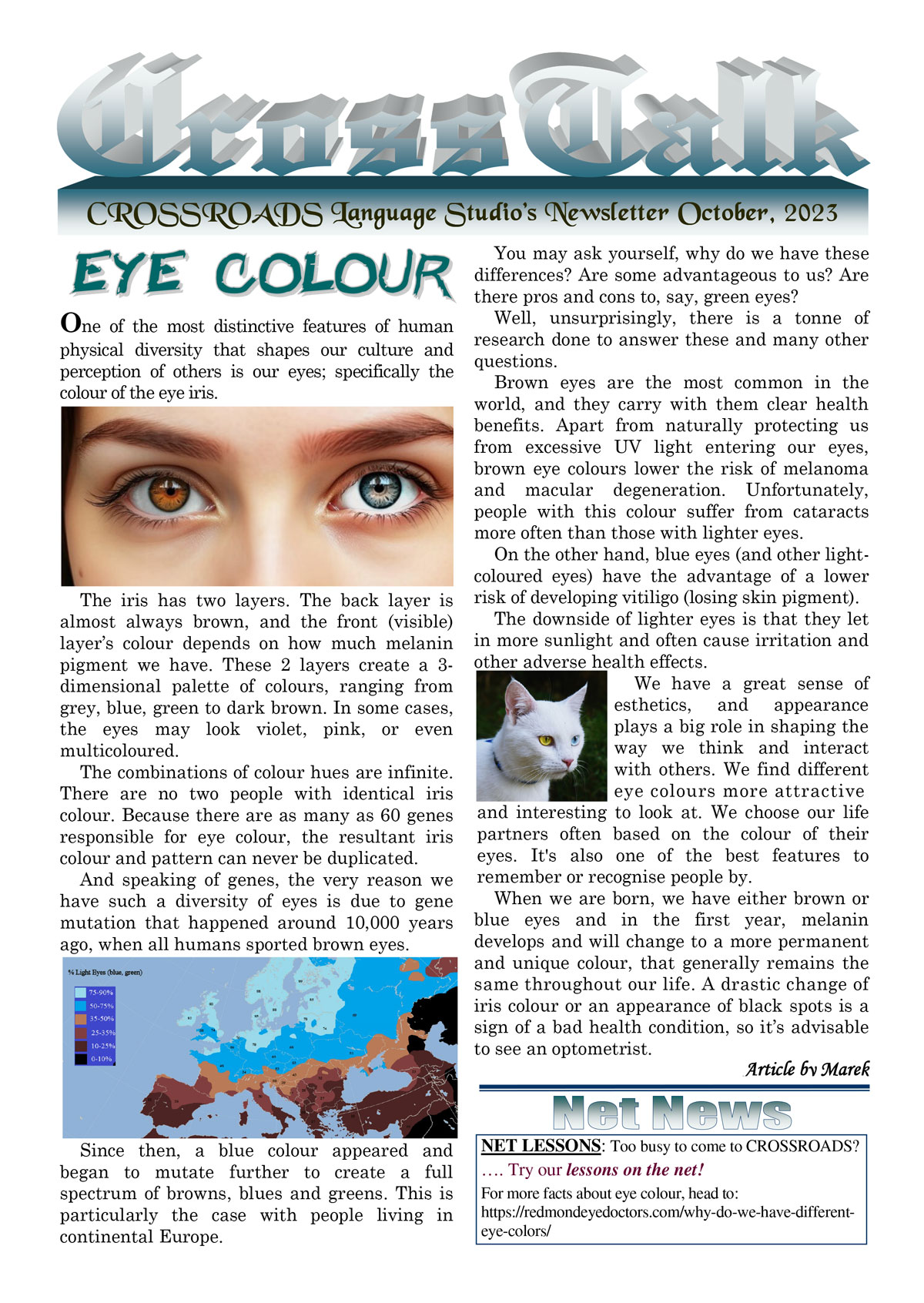CROSSROADS Language Studio’s Newsletter October, 2023 Eye Colour

One of the most distinctive features of human physical diversity that shapes our culture and perception of others is our eyes; specifically the colour of the eye iris.
The iris has two layers. The back layer is almost always brown, and the front (visible) layer’s colour depends on how much melanin pigment we have. These 2 layers create a 3-dimensional palette of colours, ranging from grey, blue, green to dark brown. In some cases, the eyes may look violet, pink, or even multicoloured.
The combinations of colour hues are infinite. There are no two people with identical iris colour. Because there are as many as 60 genes responsible for eye colour, the resultant iris colour and pattern can never be duplicated.
And speaking of genes, the very reason we have such a diversity of eyes is due to gene mutation that happened around 10,000 years ago, when all humans sported brown eyes.
Since then, a blue colour appeared and began to mutate further to create a full spectrum of browns, blues and greens. This is particularly the case with people living in continental Europe.
You may ask yourself, why do we have these differences? Are some advantageous to us? Are there pros and cons to, say, green eyes?
Well, unsurprisingly, there is a tonne of research done to answer these and many other questions.
Brown eyes are the most common in the world, and they carry with them clear health benefits. Apart from naturally protecting us from excessive UV light entering our eyes, brown eye colours lower the risk of melanoma and macular degeneration. Unfortunately, people with this colour suffer from cataracts more often than those with lighter eyes.
On the other hand, blue eyes (and other light-coloured eyes) have the advantage of a lower risk of developing vitiligo (losing skin pigment).
The downside of lighter eyes is that they let in more sunlight and often cause irritation and other adverse health effects.
We have a great sense of esthetics, and appearance plays a big role in shaping the way we think and interact with others. We find different eye colours more attractive
and interesting to look at. We choose our life partners often based on the colour of their eyes. It’s also one of the best features to remember or recognise people by.
When we are born, we have either brown or blue eyes and in the first year, melanin develops and will change to a more permanent and unique colour, that generally remains the same throughout our life. A drastic change of iris colour or an appearance of black spots is a sign of a bad health condition, so it’s advisable to see an optometrist.
Article by Marek
CROSSROADSのNews letterをPDFでダウンロード
CROSSROADSのスタッフから、最新のトピックスやメッセージなどを毎月お届けしています。クロスワードパズルなどのコーナーもあります。






